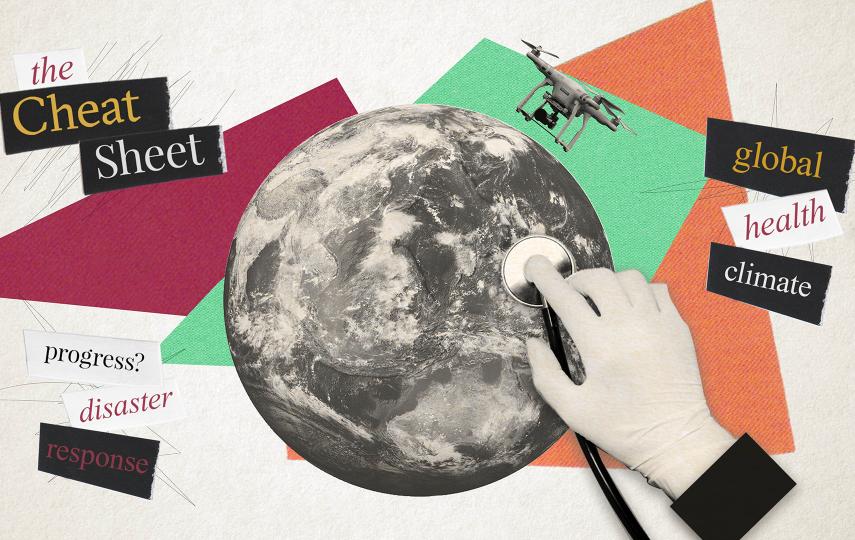A record 17 satellites are to be launched in 2008 in the largest-ever concerted global effort to monitor the impact of climate change over the next few decades, according to the World Meteorological Organisation (WMO), which is leading the initiative.
At a two-day meeting in New Orleans, USA, Jerome Lafeuille, Chief of the Space-based Observing System Division of the WMO’s Space Programme, said the organisation had managed to get the support of a number of space agencies, which would share information.
The satellites will not only provide a continuous flow of climate and weather data, but also environmental information to aid long-term study of climate change, as well as early warning information on droughts and flooding to help developing countries.
The information is critical, as the Intergovernmental Panel on Climate Change (IPCC) has warned that by 2020 up to 250 million people in Africa could be exposed to increased water stress as a result of climate change, and food production could be halved. Fresh water availability in Asia was also expected to fall.
Rising sea levels would exacerbate inundation, erosion and threaten infrastructure and settlements. Uncertain climate is also set to make weather events like cyclones, flooding and rainfall more intense and their impact on food security and livelihoods more severe.
“Food security management relies on the combined use of environmental and meteorological satellites,” Lafeuille told IRIN. “Meteorological satellites provide real-time information, while environmental or land-surface imaging satellites provide high resolution information on land-cover.”
Mannava Sivakumar, Chief of WMO’s Agricultural Meteorology Division, said remote sensing provided large-scale data on growing conditions such as soil moisture and land surface temperature on a large scale, which helped plan crop planting.
The WMO meeting in New Orleans, which ended on 16 January, marked the new contribution of Brazil, which operates a satellite programme with China (CBERS) to monitor environment. Brazil announced it would complement information on Africa provided by the European Organisation of Meteorological Satellites (EUMETSAT) for several years.
The information from CBERS will help develop the African Monitoring of Environment for Sustainable Development regional project, launched in 2007 to help African countries improve management of their natural resources.
At least 16 geostationary and low-earth orbit satellites currently provide operational data on the planet’s climate and weather as part of the WMO’s Global Observing System.
Among the satellites to be launched are two research stations, the Japanese Greenhouse Gas Observation Satellite (GOSAT) and the US National Aeronautics and Space Administration (NASA) Orbiting Carbon Observatory (OCO), which will monitor carbon dioxide concentration. A new European Space Agency satellite will provide data on soil moisture and ocean salinity.
The increasingly uncertain climatic patterns have been blamed on the emission of greenhouse gases such as carbon dioxide, which trap heat in the atmosphere.
Need to apply information
WMO’s Sivakumar pointed out that while space technology could make substantial contributions to advance knowledge about conditions leading up to the main aspects of managing the effects of climate change - preparedness, prevention and relief of drought and flood, and disaster-risk reduction - application of the information was critical and there was need to build capacity in countries.
Satellites are a unique and essential component of global efforts to track not only severe weather but also subtle changes to the earth’s climate, providing a global picture of rising ocean levels, desertification and alterations in the atmosphere.
In December 2007, Colorado State University, USA, managed to remove any uncertainty about climate change, based on information provided by NASA satellites, including CloudSat, which provides comprehensive data on cloud and their impact on climate.
One of the studies which looked at the record reduction of Arctic sea ice in 2007, found that the total cloud cover over the western Arctic, where most of the ice loss occurred, was 16 percent less over the 2007 melt season than in 2006, according to the NSAS news website. The clearer skies caused by global warming had allowed more of the sun’s energy to melt the thinning sea ice and heat the ocean surface.
CloudSat is providing some of the first, most direct observations of where rainfall occurs on a near-global basis, allowing scientists to see for the first time, what percentage of earth’s clouds are responsible for precipitation.
jk/he
This article was produced by IRIN News while it was part of the United Nations Office for the Coordination of Humanitarian Affairs. Please send queries on copyright or liability to the UN. For more information: https://shop.un.org/rights-permissions





